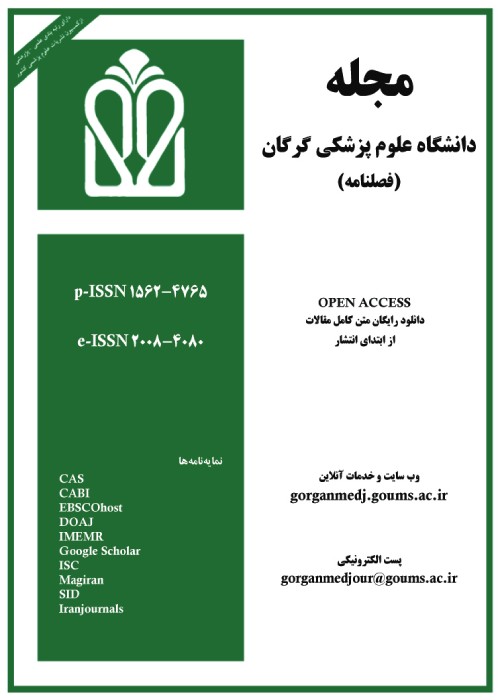Protective effect of Adenosine A1 receptor and ascorbic acid on hippocampal neuronal density and memory disorder in ischemia reperfusion induced Rats
Author(s):
Abstract:
Background And Objective
Brain ischemia is one of the most important factor of morbidity and mortality and leaving many people with mental and physical disabilities. Until now there are no appropriate medications to prevent and cure ischemic injury. This study was done to evaluate the protective effect of Adenosine A1 receptor and ascorbic acid on hippocampal neuronal density and memory disorder in ischemia reperfusion induced Rats. Materials And Methods
This experimental study was performed on the hippocampus pyramidal neurons on 56 male BALB/c mice. Animals randmly allocated into 8 groups (N=7) including: 1) intact، 2) ischemic control group، 3) ischemic، plus agonist and adenosine of A1 receptor، 4) ascorbic acid (100 mg/daily)، 5) ischemic plus agonist adenosine receptor (1 mg/1 kg) one week after ischemia، 6) ischemia، ascorbic acid befor and after ischemia and A1 receptor (1 mg/1 kg) agonist after ischemia، 7) A1 receptor، antagonist (2. 25 / 1 kg)، one weed after ischemia، 8) Ascorbic acid (100 mg/1kg) before and after ischemia plus A1 receptor antagonist (2. 25 / 1 kg) after ischemia. Ischemia induced by clamping of common carotid artery and the drugs was injected subsequently into peritoneum after reduction of inflammation of ischemic zone. The Y-maze memory test performed after completing the treatment period، afterward brains fixed and prepared for microscopic nissl staining method. The counting of pyramidal cells were performed at 53500 square micrometer of CA1. Data were analyzed using SPSS-15 and ANOVA test. Results
The Y-maze test showed extensive deficit in short-term memory in ischemic group (PA=200) but in treatment groups this deficit significantly reduced (PA=243، 248 and 265). The normal neuronal cell in ischemic group was significantly lowered (n=87) than treatment groups (n=111، 105 and 125) including ascorbic acid group (125)، adenosine receptor agonist (105) and ascorbic acid plus agonist adenosine receptor (111). The number of normal neuronal cell in ischemic groups significantly is reduced compared to treatment group (P<0. 05). Conclusion
This study showed that concurrent treatment of ascorbic acid and Adenosine A1 receptor agonist can significantly reduce the complications caused by brain ischemia in CA1 area of hippocampus.Keywords:
Language:
Persian
Published:
Journal of Gorgan University of Medical Sciences, Volume:14 Issue: 4, 2013
Pages:
52 to 59
magiran.com/p1086021
دانلود و مطالعه متن این مقاله با یکی از روشهای زیر امکان پذیر است:
اشتراک شخصی
با عضویت و پرداخت آنلاین حق اشتراک یکساله به مبلغ 1,390,000ريال میتوانید 70 عنوان مطلب دانلود کنید!
اشتراک سازمانی
به کتابخانه دانشگاه یا محل کار خود پیشنهاد کنید تا اشتراک سازمانی این پایگاه را برای دسترسی نامحدود همه کاربران به متن مطالب تهیه نمایند!
توجه!
- حق عضویت دریافتی صرف حمایت از نشریات عضو و نگهداری، تکمیل و توسعه مگیران میشود.
- پرداخت حق اشتراک و دانلود مقالات اجازه بازنشر آن در سایر رسانههای چاپی و دیجیتال را به کاربر نمیدهد.
In order to view content subscription is required
Personal subscription
Subscribe magiran.com for 70 € euros via PayPal and download 70 articles during a year.
Organization subscription
Please contact us to subscribe your university or library for unlimited access!


